Last year, I was all set to do the Ohlone Wilderness Trail from Dell Valle Lake to Mission Peak.
Then COVID-19 shut everything down and they cancelled my reservations. It was the first of many adjustments my life would have to make for that year from hell.
So, I wanted to do it this year once they allowed access. Unfortunately, last fall they also had some fires the area, so I was worried that would stop me from doing it or it would be depressing to hike through burnt out forests. The fire maps showed a big chunk of the central part of the trail within the burned area. Unfortunately, I couldn’t get a lot of detailed info on what the conditions were.
Regardless, I wanted to do the hike for several reasons: I needed to burn off some winter hibernation weight and rust, I needed to test out my new backpack and some other new gear, and I wanted to do this hike that was denied me last year.
I had done it five years ago, but it’s a nice hike east of the southern part of the San Francisco Bay. Some great views along the way and some time away from civilization.
So, I started late on the last Thursday of April from the Dell Valle western lake shore. Why late? It was only 2 miles to the first campsite: Boyd Camp. The last time I had gone all the way through to Maggie’s Half Acre campsite in a single day and it felt very rushed and tired me out thoroughly. So, I wanted to take care of the first climb and then enjoy a night in the wilderness.
Backpacking amnesia struck me right away. It was over 1,600 feet to climb that two miles, so pretty steep. I didn’t seem to recall it being that bad the first time, although I do remember it being a long day which is why I wanted to do this first section in a short hike.
Although I had thought several times about turning around and aborting the trip, I somehow kept going upward. Slowly.
It took me 3 hours to get to Boyd Camp. Checking my old GPS tracks, I had made it to that point in 2 hours. I must be very rusty from the previous winter or getting old. Or both.
I didn’t really know what the 2 campsites looked like, so I just took #1 when I made the reservation. Turned out to be a good choice. It was well off the trail and had a view of the sun as it was setting behind the hills to the west, a view of Mt Diablo to the north, and should have a view of the sun when it rose the next morning. On the other side of the trail, campsite #2 didn’t look anywhere near as nice and seemed to have a beehive nearby based on the buzzing. But I didn’t look around that side too much.
Originally, I had planned to climb a nearby hill and watch the sunset from there, but I was so exhausted from the climb and since I could see some of the sunset light show from my campsite, I decided to enjoy it from there.
I had had a simple dinner before driving to Dell Valle, so I just had to setup my tent, sleeping pad, and bag before I could lay down and enjoy time off my feet. A little rough start to the trip, but I enjoyed my first night. To the north I saw the lights from Livermore and was a little surprised that the red warning lights on the large windmills along the Altamont Pass blinked in sync with all the other windmills. Interesting thing to see.
In the morning, I had breakfast as I watched the sun rise above the hills to the east. That cheered me up and I packed up my tent and gear and started down the trail.
The plan was to follow the Ohlone Wilderness Trail, but take a loop that went to Murietta Falls and then past Stewart’s Camp, where I could refill my water. I hadn’t taken that side trip the first time I did this trail, so I thought I’d do it this time.
So far, I had not seen any signs of fire damage, much to my great relief.
When I got to Johnny’s Pond, the trail to the falls forked off from the main trail. Along the way that morning, I had been second guessing my decision to take the side trip. It was a mile longer and also a not so insignificant elevation to descend and then re-climb to get back the the main trail. Add the low rainfall we had had this winter to the equation and I decided it probably wouldn’t be worth going to see the falls during this trip.
That left me with a problem: I was out of water and as far as I could see there were no water sources before Maggie’s Half Acre. I dislike using stagnate water to filter and refill my water, but I didn’t have much choice at that point. Johnny’s Pond didn’t look that bad, so I put my new filter to the test and filled up on about 2 liters of water and mixed a bottle of Gatorade.
As I did that, RATTLESNAKE!
A little tiny rattlesnake, but still… It slithered away as soon as we saw each other and slid under a little rock. I relocated to a different position to fill up and then took a short break before hitting the trail again.
As I passed the junction that I would have come from if I had taken the other route, I saw my first sign of fire damage. A few scattered burnt trees could be seen around the trail, but it looked like the fire hadn’t completely ravaged the area. The green grass fed by the meager water we did get during the winter also helped make the area look less fire damaged.
As I continued down the trail, it did seem that the fire hadn’t consumed the entire area and had hopped around and only burned some trees and smaller areas. That was fortunate.
As I neared Rose Peak, I was getting a lot of feelings of deja-vu from my first and only hike along this trail years earlier. It really was a nice picturesque area with views all the way to the bay and to the north of Mt Diablo and even Mt Tamalpais to the far north. Those views helped drive me forward and upward. Rose Peak didn’t really stand out much from the ridge it was the high point for (3,817 feet) and you really can’t pick it out from any of the high mountains around the Bay Area unless you are looking for it.
As I finished the climb up to the top of Rose Peak, I celebrated for several reasons: It had a great 360 degree view of the area, it was the final climb of the 1,800 foot climb I had to do that day, and the area didn’t show any significant fire damage. I did see some fencing that looked like it was put in place to control erosion from fire damaged land, but didn’t see a lot of obvious fire damage in the area. The re-grown green grass must have covered a lot of the scars.
After enjoying the view from there, I made my way down and passed the junction to Maggie’s Half Acre camp. I had stayed there my previous trek down this trail, but it was not available for this night. It was a nice group of campsites, tucked away along a old road that snaked around the north side of Rose Peak. It’s best feature was it was close to Rose Peak where you could easily go to see the sunset and sunrise.
But I had another mile to go before I could setup camp and rest at Doe Camp. Mostly downhill, thankfully. Since this camp is marked as a horse camp, I was a little surprised that it was available to a hiker.
I got there and headed down a steep path to campsite #1. There were a couple bare dirt spots for tents along the trail down, but were not very level, so I continued down and emerged into a cleared area covered with grass. Yup, a horse camp. If the large grazing area wasn’t proof of that, the horse hitching posts confirmed it.
There still wasn’t a lot of level ground to setup my tent on. After initially thinking of a spot down near the bottom of the clearing, I decided on a flat area near the hitching posts. I was a little hesitant at first because horse do certain bodily functions around the hitching posts they are tied to, but there wasn’t any fresh droppings around and the old evidence of their presence wasn’t smelly any more. Must have not had any horses there for quite a while (definitely not yet this year).
Plus, the view from that point was fantastic! The bay to the west and Mt Tamalpais and Mt Diablo to the north! And a prime view of the sunset as well. Not being able to see the sunset from Rose Peak wasn’t a disappointment any more. The fog and low cloud cover to the west did concern me a little.
After setting up my tent and having dinner, I settled in to watch the sunset. I was also testing how my new iPhone handled sunset movies and my Panasonic ZS-200 handled sunset pictures. I was a little concerned at the Panasonic camera pictures the previous night, but I discovered if I lowered the exposure 1-2 stops it got the colors I wanted and could see that evening.
The clouds did block the sun a bit, but there was some great color to be seen before and after the sun finally set behind the mountains along the coast. A spectacular night.
One benefit of the location I put my tent, is that it had a great view of the skies. Seeing the night sky before going to sleep was a great end to the day.
I also managed to get some great night pictures of the city lights and stars in the sky. My new camera actually has a 60 second timer (30 for my broken Sony HX99) to take pictures at night, particularly of stars. But my attempt sot use it had the stars growing into short dashes due to the time taken on a 60 second shutter. Maybe the 30 second limit on my Sony was the right amount to not get streaking stars.
The Panasonic does have a 1 inch sensor, which is one of the reasons I am trying it out. It does make the camera notably bigger than the Sony, but it still fits in my hiking pants pocket so the size might not be a problem if I decide to keep the camera. The larger sensor did make the long shutter pictures of starts impressive, but the 1-2 second long shutter pictures using the various city/sky nightscape scene functions were also very nice. Not sure if they benefited from the city lights or if the new camera will handle pictures of stars much better than my Sony. I have a couple more weeks to test it before I make a final decision.
So I went to sleep with a smile on my face and sore legs glad to be on my air mattress. 🙂
One drawback of Doe camp is that you didn’t have a direct view of the eastern sky, so not much of a view of the sunrise unless you climbed up the steep path back to the main trail (which I wasn’t going to do early in the morning before sunrise). There was some color and light cast against the surrounding hills as I ate breakfast, so all was not lost.
If I thought the previous day’s hike was rough, I was in for a rougher day. It was a mile closer than the last time I hiked this trail, but the hike to the Sunol Regional Park entrance was a long 8.5 miles. Fortunately, it was mostly downhill.
The big problem is that it was another 4 miles after that to climb up to near the top of Mission Peak for the next campsite. I’d done it before, so I’ll just do it again.
I passed a rocky hill that looked a little like the profile of Half Dome, but apparently it’s called Goat Rock. Didn’t seem to match what it looked like.
There was some more signs of burnt trees that morning, but not a lot of visible charring otherwise. Once I reached the border of Sunol Regional Park, there weren’t any burnt trees around the trail.
As I passed through the Sky campsites, I made a mental note to someday camp there. The views of the area from the sites were very spectacular. Unfortunately, I didn’t think to refill my Camelbak with some of the water available there. I had enough to get to the entrance to the park, where there should be plenty of water available.
I had day hiked this area several times (but never in summer when this area was absolutely baked in the sun and was way to hot to even do short hikes). Still, it was a nice descent to the entrance. But apparently I took a wrong turn somewhere.
Instead of going along Mccorkle Trail, I ended up descending along a use trail bordering a cattle grazing area (no cattle around though). By the time I realized my mistake, I didn’t want to climb back up to the correct trail, so kept going down to hopefully meet the View Trail. The use trail was pretty clear, so hopefully it didn’t end at a steep cliff.
It didn’t. The View Trail took me back towards the entrance and rejoined the trail I should have been on in the first place. As I reached the entrance, I focused on getting the to visitor center for…
A Diet Coke, cold Gatorade, and some non-filtered water. Sometimes the little things like that help drive you forward when doing long backpacking hikes.
But I was DENIED!
The visitor center closed at 12:30pm (shorter hours due to the pandemic) and it was a quarter past 1pm! The horror!
Then it really became bad. There was no running water anywhere around the visitor center or parking lot. Even the nearby streams were dry due to the low rainfall this prior winter.
I had already been dreading the 4 mile, 2,000 foot climb up to the top of Mission Peak before that. I did get a half liter of water from a ranger who saw my plight.
I could have probably gotten some additional water if I asked some of the people leaving the park, but even after a long rest I just couldn’t bring myself to start the final climb of the day. Partly it was since my times for all three days was significantly longer than my first time, but also the long hike that day just finally got to me. The low clouds hanging over the top of Mission peak also worried me that there wouldn’t be a view from the top anyway.
Unfortunately, sometimes when you have a possible abort point, you are tempted to take it. And I was tempted and did decide to abort my trek there.
I did have to hike about a mile and a half down the road until I got a cell signal and could get a Uber rider back to my Jeep at Dell Valle. And it took a while to get a driver to accept my ride since it was a very long ride back. Profitable for Uber and the driver, who I gave a nice tip to since I was glad to be back.
So, despite the early end to the trek, I think i enjoyed it for the most part. It was important to me to get out and start doing bigger hikes to get ready for my summer backing trips in Yosemite, and then a big long thru hike in Colorado or the JMT northbound. I still haven’t officially chosen which of those two big hikes I’ll do, but will have to choose by June.
My Panasonic camera seemed to work pretty well and I was impressed by the night pictures I could get from it. Still a little concerned at how much work I had to do to get good sunset pictures out of it and the AE and focus lock doesn’t seem to work as my Sony did. I’m used to locking in the exposure and focus by pressing the shutter button half way, I may have to dig through the instruction manual some more, but the Panasonic has a habit of re-adjusting focus and exposure when I press the shutter fully down. Despite using some AE/focus lock settings. Not sure why I can’t seem to get it to work the way I want it to.
I can do the Mission Peak climb and camp from Sunol as a ‘quickie’, so I may decide to do that when I have a free weekend.
So, a nice trek to get my body moving again for the bigger summer treks yet-to-come.


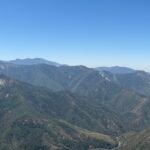
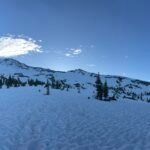
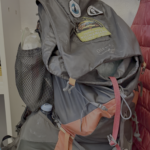
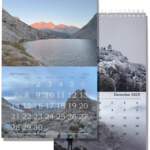
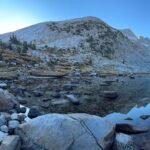
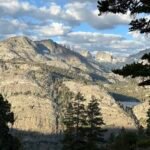
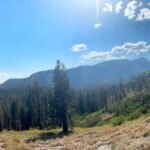
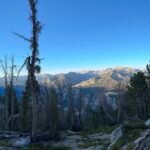
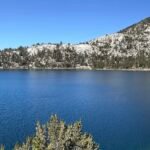
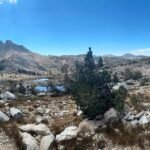
Comments by WanderingJim
JMT 2020 Day 3
"I'm afraid I have no idea. Not really a fisherman, so don't..."
JMT 2020 Trek Day by Day
"Yeah, but with 9,000 pictures, it's hard to label each one..."
Kilimanjaro – October 2019
"Everest Base camp is on my list too. Mostly since I know..."
Kilimanjaro
"You started hiking with Kilimanjaro first? Even I worked my..."